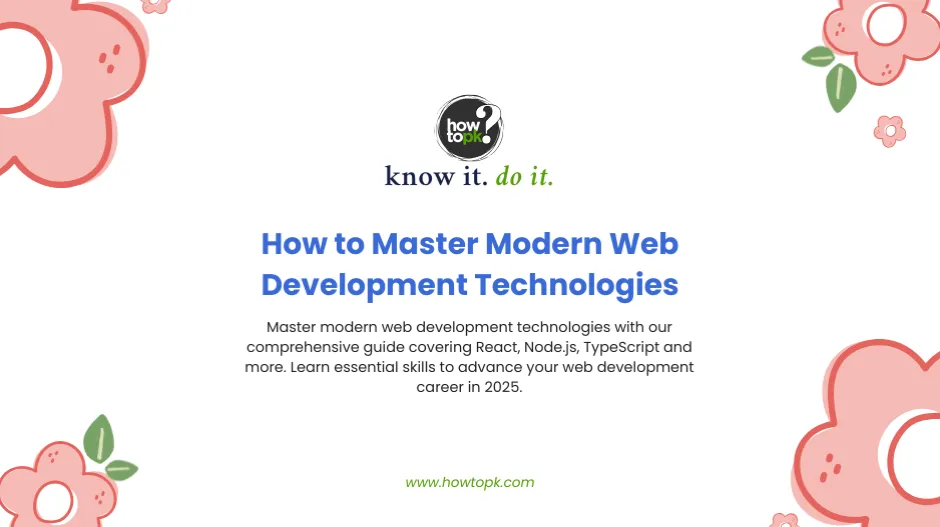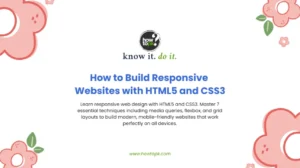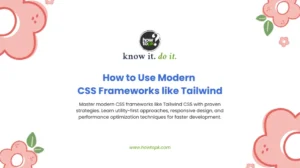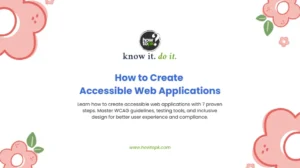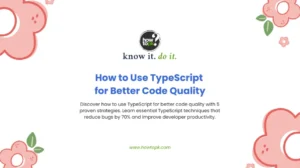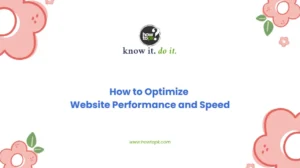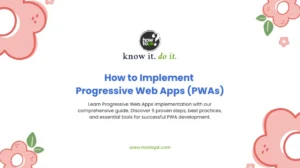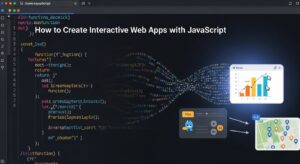Modern web development technologies are evolving at breakneck speed, and staying current can feel overwhelming. Whether you’re a beginner taking your first steps into coding or an experienced developer looking to expand your toolkit, mastering these essential technologies will dramatically boost your career prospects and project capabilities.
The web development landscape has transformed significantly over the past few years. What worked in 2020 might already feel outdated today. New frameworks emerge, best practices shift, and user expectations continue to rise. This comprehensive guide will walk you through the most crucial modern web development technologies you need to master right now.
Understanding the Current Web Development Ecosystem
Before diving into specific technologies, let’s examine what makes today’s web development environment unique. The shift toward component-based architectures, API-first development, and cloud-native solutions has fundamentally changed how we build web applications.
Modern web development technologies emphasize performance, scalability, and user experience above all else. Static site generators are experiencing a renaissance, serverless architectures are becoming mainstream, and the line between frontend and backend development continues to blur.
Consider this: a typical modern web application might use React for the frontend, Node.js for the backend, MongoDB for data storage, and deploy to a cloud platform like Vercel or Netlify. This stack represents just one of many possible combinations, but it illustrates how interconnected today’s web technologies have become.
Frontend Frameworks: The Foundation of Modern Web Development
React: The King of Component-Based Development
React remains the most popular frontend framework, and for good reason. Its component-based architecture makes building complex user interfaces manageable and maintainable. Learning React opens doors to React Native for mobile development and Next.js for full-stack applications.
Key React concepts you must master include:
- JSX syntax and component composition
- State management with hooks (useState, useEffect, useContext)
- Props and data flow patterns
- Virtual DOM and reconciliation process
Pro tip: Start with functional components and hooks rather than class components. The React team has moved away from class-based components in favor of the more intuitive hooks API.
Vue.js: The Progressive Framework
Vue.js offers a gentler learning curve than React while maintaining powerful capabilities. Its template syntax feels familiar to developers coming from traditional HTML, making it an excellent choice for teams transitioning to modern web development technologies.
Vue’s composition API, introduced in Vue 3, brings React-like functionality while maintaining Vue’s approachable nature. The framework’s excellent documentation and supportive community make it ideal for developers who prefer comprehensive guidance.
Angular: The Enterprise Solution
Angular provides a complete framework solution with TypeScript built-in, dependency injection, and powerful CLI tools. While it has a steeper learning curve, Angular excels in large-scale enterprise applications where structure and maintainability are paramount.
Backend Technologies: Powering Modern Web Applications
Node.js: JavaScript Everywhere
Node.js revolutionized web development by bringing JavaScript to the backend. This allows developers to use the same language across their entire stack, reducing context switching and improving productivity.
Essential Node.js concepts include:
- Event-driven, non-blocking I/O model
- NPM package management
- Express.js framework for building APIs
- Async/await patterns for handling asynchronous operations
Python and Django/Flask
Python remains incredibly popular for backend development, particularly in startups and data-driven applications. Django provides a batteries-included framework, while Flask offers more flexibility for custom architectures.
Python’s strength lies in its readability, extensive library ecosystem, and strong community support. It’s particularly valuable for developers interested in machine learning integration or data science applications.
Database Technologies: Storing and Managing Data
| Technology | Type | Best Use Case | Learning Difficulty |
|---|---|---|---|
| MongoDB | NoSQL | Flexible, document-based apps | Moderate |
| PostgreSQL | SQL | Complex relational data | Moderate |
| Firebase | Cloud | Rapid prototyping, real-time apps | Easy |
| Redis | Key-Value | Caching, session storage | Easy |
Modern Database Paradigms
The choice between SQL and NoSQL databases depends heavily on your application requirements. PostgreSQL offers robust relational features with JSON support, making it versatile for modern web development technologies. MongoDB provides flexibility for rapidly evolving schemas, while Firebase offers real-time synchronization with minimal setup.
Development Tools and Workflow
Version Control with Git
Git proficiency is non-negotiable in modern web development. Beyond basic commands, understanding branching strategies, merge conflicts, and collaborative workflows through platforms like GitHub or GitLab is essential.
Advanced Git skills include:
- Interactive rebasing for clean commit histories
- Git hooks for automation
- Branch protection rules and code review processes
- Understanding of Git flow vs. GitHub flow strategies
Build Tools and Task Runners
Modern web development relies heavily on build tools to optimize code, manage dependencies, and automate repetitive tasks. Webpack dominated for years, but newer tools like Vite and esbuild offer significantly faster build times.
Essential build tool concepts:
- Module bundling and code splitting
- Hot module replacement for development
- Tree shaking for optimizing bundle size
- Asset optimization and compression
Cloud Platforms and Deployment
Serverless Architecture
Serverless computing represents a fundamental shift in how we think about backend infrastructure. Platforms like AWS Lambda, Vercel Functions, and Netlify Functions allow developers to focus on code rather than server management.
Benefits of serverless architecture:
- Automatic scaling based on demand
- Pay-per-use pricing model
- Reduced operational overhead
- Built-in high availability
Container Technologies
Docker has become essential for ensuring consistent development and production environments. Understanding containerization concepts helps in deploying applications reliably across different platforms.
Basic Docker concepts every web developer should know:
- Creating Dockerfiles for applications
- Docker Compose for multi-service applications
- Container orchestration basics
- Image optimization for faster deployments
Testing in Modern Web Development
Testing is no longer optional in professional web development. Modern web development technologies come with comprehensive testing ecosystems that make writing and maintaining tests more approachable.
Testing Pyramid Approach
- Unit Tests: Test individual functions and components
- Integration Tests: Test how different parts work together
- End-to-End Tests: Test complete user workflows
Popular testing frameworks include Jest for JavaScript, Pytest for Python, and Cypress for end-to-end testing. The key is starting with simple unit tests and gradually building more comprehensive test coverage.
Performance and Optimization
Modern web applications must perform well across a wide range of devices and network conditions. Understanding performance optimization techniques is crucial for creating competitive applications.
Core Web Vitals and User Experience
Google’s Core Web Vitals have made performance metrics more important than ever. Key metrics include:
- Largest Contentful Paint (LCP)
- First Input Delay (FID)
- Cumulative Layout Shift (CLS)
Tools like Google PageSpeed Insights and GTmetrix provide actionable insights for improving these metrics.
Learning Strategy and Next Steps
Mastering modern web development technologies requires a structured approach. Rather than trying to learn everything simultaneously, focus on building a solid foundation in one area before expanding to others.
Recommended Learning Path
- Start with fundamentals: HTML, CSS, and JavaScript
- Choose one frontend framework: React, Vue, or Angular
- Learn backend basics: Node.js or Python
- Understand databases: Start with one SQL and one NoSQL option
- Practice deployment: Deploy projects to cloud platforms
- Add testing: Implement basic testing practices
- Optimize performance: Learn performance monitoring and optimization
Building Your Portfolio
The best way to demonstrate mastery of modern web development technologies is through real projects. Create applications that showcase different skills:
- A personal portfolio site (frontend skills)
- A full-stack CRUD application (backend integration)
- An API project (backend and database skills)
- A deployed production application (DevOps skills)
Document your learning journey and share your projects on platforms like GitHub. Employers value developers who can demonstrate continuous learning and practical application of skills.
Staying Current with Technology Changes
The web development field evolves rapidly. Successful developers cultivate habits for staying current:
- Follow key developers and organizations on Twitter
- Subscribe to newsletters like JavaScript Weekly and Frontend Focus
- Participate in developer communities like Dev.to and Stack Overflow
- Attend virtual conferences and webinars
- Experiment with new technologies through side projects
Conclusion
Mastering modern web development technologies is a journey rather than a destination. The specific tools and frameworks will continue evolving, but the underlying principles of building performant, scalable, and maintainable web applications remain constant.
Focus on understanding core concepts deeply rather than surface-level familiarity with many tools. A developer who truly understands React’s component model can adapt to Vue or Angular more easily than someone who has memorized syntax without understanding principles.
The investment in learning modern web development technologies pays significant dividends in career opportunities, project capabilities, and professional satisfaction. Start with one technology, build something real, and gradually expand your toolkit as you gain confidence and experience.
Becoming proficient takes time and consistent practice. Set realistic goals, celebrate small wins, and don’t be discouraged by the vast landscape of available technologies. Every expert developer started exactly where you are now.
Ready to dive deeper? Choose one technology from this guide and commit to building a project with it this week. The journey to mastering modern web development technologies begins with that first line of code.

